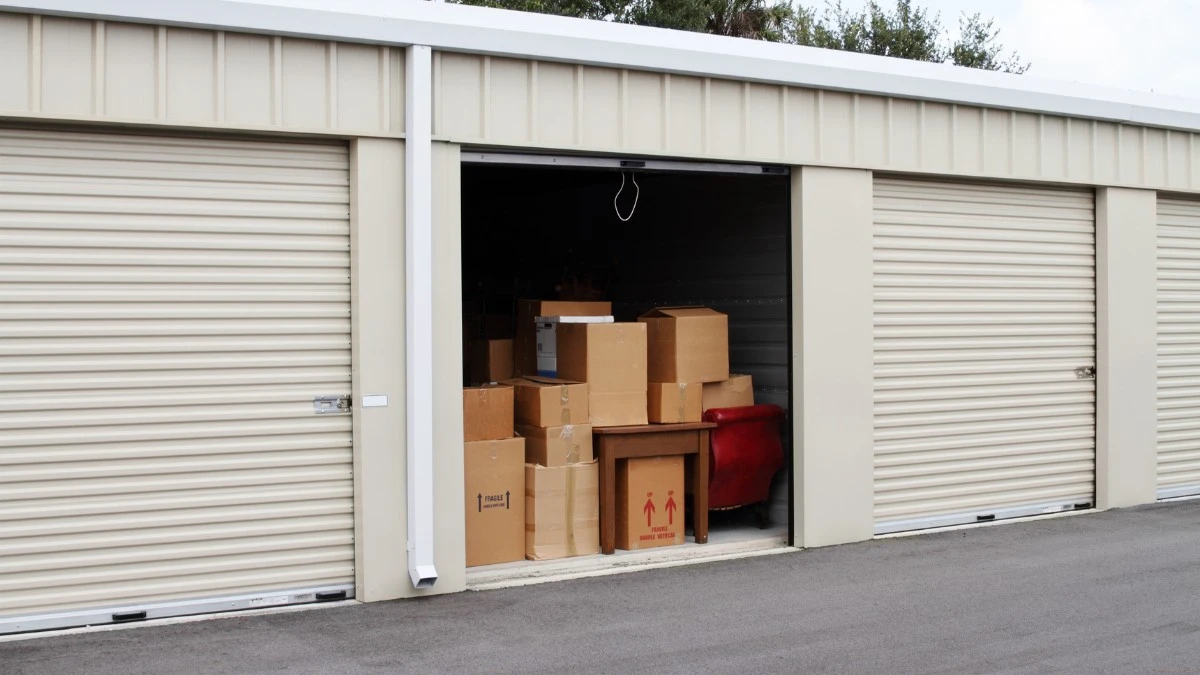15 Smart Ways To FLIP $500 and Turn It Into $1000 in 24 Hours or Less

Your $500 can become $1000 faster than you think. These proven strategies go beyond basic money advice. No get-rich-quick schemes here. Just real methods that work when you put in the effort.
From sneaker flips bringing 100% returns to smart crypto trades that double your money, we break down 15 realistic ways to grow your cash quickly. People just like you are doing this right now.
Some make it happen in under 24 hours with the right approach. The best part? You can start with what you know and scale up. No fancy degree is needed.
These methods work for regular folks who want to be smart with their money. Stop leaving money on the table. Time to make your $500 work harder.
1. Limited Edition Sneakers and Streetwear Flipping

The sneaker resale market presents a lucrative opportunity for quick profits. Start by focusing on brands like Nike, Adidas, and Yeezy that consistently release limited-edition items. Use platforms like the SNKRS app, Adidas Confirmed, and retail sites to purchase at retail prices. The key is identifying releases with high resale potential through research on StockX and GOAT historical data. For $500, you can typically secure 1-2 pairs of high-demand sneakers.
Set up accounts on multiple retail platforms beforehand and use automated page refreshers to increase purchase chances. Build relationships with local sneaker stores for early access to releases. Learn bot technology basics, but be aware that many sites have anti-bot measures. Research by Cowen & Company shows the sneaker resale market reached $2 billion in 2024, with popular releases seeing average markups of 50-100% within 24 hours.
Create a network within sneaker communities on Discord and Reddit to stay informed about upcoming releases and market trends. Price your items competitively but not lowest by analyzing current market prices and recent sales data. Learn product authentication to avoid counterfeits. Consider joining cook groups for insider information, though membership fees range from $30-60 monthly.
2. Stock Market Day Trading (Penny Stocks)

Day trading penny stocks requires deep market knowledge and quick decision-making. Focus on stocks priced under $5 with daily trading volumes above 100,000 shares. Use scanning tools like Finviz to identify stocks showing momentum patterns. Start with paper trading to practice strategies. Split your $500 into multiple trades to minimize risk exposure per position.
Set strict rules for entry and exit points. Use technical analysis indicators like RSI, MACD, and moving averages to identify potential breakout points. Implement hard stop losses at 7-10% below entry prices. Track level 2 data to understand buying and selling pressure. Consider using platforms like Webull or TD Ameritrade for commission-free trades and advanced charting tools.
Study SEC filings, particularly 8-K and 10-Q reports, to understand company fundamentals. Monitor social media sentiment and news catalysts that could affect stock prices. Keep detailed trading logs including entry points, exit points, and reasons for trades. Remember pattern day trading rules if an account is under $25,000.
3. Flea Market Furniture Restoration

Target flea markets early morning for the best inventory selection. Look for solid wood furniture with good bones but cosmetic issues. Popular items include mid-century modern pieces, vintage dressers, and antique chairs. Allocate $200-300 for inventory purchases and $200 for supplies like sandpaper, paint, stains, and new hardware.
Learn basic restoration techniques including wood filling, sanding sequences (40-80-120-220 grit progression), and proper painting methods. Invest in quality tools: orbital sander ($50), quality brushes ($30), wood filler ($15), primer ($20), and various paints/stains ($85). Sturdy wood types and appropriate restoration methods for each. Document transformation process for marketing purposes.
Create detailed cost spreadsheets including purchase price, materials, labor hours, and target sale price. Build relationships with flea market vendors for early access to new items. Learn to spot genuine antiques versus reproductions. Use Facebook Marketplace and local vintage furniture groups for sales—professional photos and staging significantly impact sale prices.
4. Bank Account Sign-up Bonus Programs

Bank bonus churning requires a systematic approach and attention to detail. Research current offers on sites like Doctor of Credit and Banking Churning Reddit. Focus on banks offering quick bonus payouts within 30-60 days. Common requirements include direct deposits, debit card transactions, and maintaining minimum balances.
Create a tracking spreadsheet with bank names, bonus amounts, requirements, important dates, and minimum balance requirements. Many banks verify ChexSystems reports, so space out applications. Meet requirements precisely often using ACH transfers coded as direct deposits from specific banks. Keep detailed notes on closing procedures and waiting periods between bonuses.
Prioritize banks with no early account closure fees. Calculate the effective hourly rate considering time investment. Watch for 1099-INT forms during tax season as bonuses are taxable income. Consider opening business checking accounts for higher bonuses if you have any form of business documentation. Read all terms and conditions carefully for bonus eligibility and possible fees.
5. Bulk Electronics Resale

Start by identifying profitable electronics with consistent demand. Target items like previous-generation smartphones, laptops, and gaming consoles. Build relationships with local repair shops that sell refurbished returns in bulk. Use platforms like Tech44 and B-Stock to access liquidation lots. With $500, focus on 3-4 items rather than spreading too thin across multiple categories.
Test each device thoroughly using diagnostic tools and document the condition with detailed photos and videos. Learn basic repair skills for common issues like battery replacement, screen repairs, and port cleaning. Stock essential repair parts for quick turnaround. Use apps like CheckESN to verify clean IMEI numbers on phones. Price repairs based on market rates plus parts cost with 40-50% markup.
Create detailed listings including specific model numbers, storage capacity, and any modifications or repairs performed. Build trust through transparent condition reporting and offering short warranty periods. Use cross-platform selling on eBay, Facebook Marketplace, and local tech forums. Consider buying iCloud-locked devices at deep discounts if you understand unlocking procedures.
6. Domain Name Flipping

Research trending keywords and emerging industries using tools like Google Trends and SEMrush. Look for memorable, brandable two-word combinations under 15 characters. Focus on .com domains primarily, though consider growing extensions like .io for tech startups. Use platforms like GoDaddy Auctions, NameJet, and DropCatch to find expiring domains with potential.
Check domain history using archive.org and ahrefs.com to find previously valuable domains. Look for aged domains with a clean history and no spam records. Use tools like EstiBot for automated domain appraisals but develop your valuation skills. Build lists of end-user buyers including startup founders, marketing agencies, and brand managers.
Contact potential buyers through LinkedIn and professional networks rather than cold emails. Create simple landing pages for premium domains showing potential use cases. Join domain investing forums for market insights and networking. Track metrics like similar domain sales, search volume, and trademark status before purchasing.
7. Cryptocurrency Short-term Trading

Focus on established cryptocurrencies with high liquidity and trading volume. Use exchanges with low fees like Binance or Kraken. Start with stablecoins during volatile periods. Study technical analysis patterns specific to crypto markets, particularly support/resistance levels and volume indicators. Set up price alerts for potential entry points.
Monitor crypto news sources and social media sentiment. Track whale wallet movements using blockchain explorers. Use multiple time frame analyses from 5-minute to 4-hour charts for trade decisions. Keep detailed records of trades, including reasons for entry/exit and market conditions. Implement strict risk management with stop losses at 5-7%.
Learn basic blockchain technology to understand network congestion and fee implications. Use hardware wallets for storing unused funds. Consider farming yield on stablecoins during sideways markets. Track correlation with traditional markets, especially during economic news releases.
8. Storage Unit Auctions

Research local storage facilities and auction schedules. Build relationships with facility managers for insider information on unit quality. Arrive early to auctions for unit inspection. Bring basic tools like flashlights and ladders for better viewing. Calculate potential profit margins based on visible items and market prices.
Network with other buyers to potentially split large units. Learn to spot valuable items quickly in sales categories like antiques, tools, and collectibles. Prepare transportation solutions beforehand for scrap metal recycling contacts for unsellable items. Keep detailed inventory lists and photos of purchased items.
Create SOPs for item sorting, cleaning, and listing. Build relationships with consignment shops and specialty buyers. Learn shipping methods for various item types. Consider renting temporary storage for inventory management. Track seasonal trends in different product categories for optimal selling times.
9. High-end Collectibles (Trading Cards, Comics)

Focus on graded cards and comics with established value histories. Target cards from Magic: The Gathering, Pokemon, and sports cards that show consistent price stability. Learn to spot printing variations, errors, and special editions that command premiums. Build expertise in authentication, particularly for pre-1980s comics and vintage sports cards. Use price tracking tools like TCGPlayer Market and GoCollect for real-time market data.
Establish connections with local card shops and collectors for private buying opportunities. Learn proper storage methods using penny sleeves, top loaders, and UV-protected cases. Study grading standards from PSA, BGS, and CGC to identify cards worth grading. Factor in grading costs ($15-50 per item) and turnaround times when calculating potential profits. A sealed box of Magic: The Gathering’s 2019 War of the Spark set purchased for $100 reached $500 in value by early 2024.
Create detailed condition reports using standardized terminology. Photograph items under proper lighting with a macro lens for detailed shots of corners and surfaces. Join online communities for market insights and networking. Consider cross-border arbitrage opportunities where certain cards or comics command higher prices in different regions. Build relationships with grading company representatives for bulk submission discounts.
10. Local Service Business (Mobile Car Detailing)

Start with basic supplies including pressure washer, vacuum, polisher, and professional-grade cleaning products. Calculate per-car supply costs ($15-25) and time investment (3-4 hours for full detail). Target luxury car owners and busy professionals through local car enthusiast groups and business districts. Develop pricing tiers based on vehicle size and service level.
Learn paint correction techniques, ceramic coating application, and interior restoration methods. Purchase commercial insurance coverage ($300-500 annually). Create detailed service checklists and documentation procedures. Take before/after photos of every job. Build relationships with local car dealerships and auto body shops for referral business.
Set up a booking system using software like Square Appointments. Create professional invoices and accept multiple payment methods. Study water reclamation methods and eco-friendly cleaning options. Consider offering monthly maintenance packages for a steady income. Track product usage and costs per job for accurate pricing adjustments.
11. Sports Memorabilia Trading

Research upcoming sports events and player milestones that could impact memorabilia values. Focus on authenticated items from reputable sources like PSA/DNA and JSA. Learn to spot common forgeries in autographs and game-used items. Build relationships with stadium staff and team equipment managers for game-used gear access.
Create authentication documentation files for each item. Study preservation methods for different materials (jerseys, balls, equipment). Track player performance and career trajectories that might affect values. Connect with season ticket holders for access to exclusive signing events. Consider insurance for high-value inventory.
Build a network of collectors for quick flips. Learn proper shipping methods for delicate items. Study market trends around major sporting events. Create detailed provenance records for each piece. Consider specializing in specific sports or eras to build expertise.
12. HealthyWage Weight Loss Betting

Calculate optimal weight loss goals based on current BMI and timeline. Research successful strategies from previous winners. Document starting weight with video evidence following platform guidelines. Create a realistic workout and nutrition plan that can be maintained consistently.
Track daily caloric intake and exercise using apps like MyFitnessPal. Take weekly progress photos and measurements. Join support groups for accountability and motivation. Calculate daily weight loss targets to stay on track. Consider incorporating intermittent fasting for accelerated results.
Learn the proper form for exercises to prevent injury. Study nutrition timing for optimal results. Track macronutrient ratios and water intake. Create contingency plans for plateaus and setbacks. Document all weigh-ins according to platform requirements.
13. Online Course Creation and Fast Sales

Research trending topics in your expertise area using tools like Udemy Insights and Google Trends. Create comprehensive course outlines covering specific pain points. Invest in basic recording equipment including a microphone ($70) and screen recording software ($50). Structure content for busy professionals with 5-10 minute lessons.
Learn video editing basics using free tools like DaVinci Resolve. Create engaging thumbnails and course previews. Write compelling course descriptions using benefit-focused language. Build an email list through free content offerings. Use multiple hosting platforms to maximize exposure.
Develop supplementary materials like worksheets and checklists. Create active learning components and assignments. Build community features for student engagement. Track completion rates and student feedback for improvements. Consider offering limited-time launch pricing.
14. Rental Equipment Business (Weekend Party Items)

Start with high-demand items like portable speakers, projectors, and lighting systems. Calculate rental periods and security deposit requirements. Create detailed rental agreements covering damage and late returns. Build relationships with event planners and local venues.
Maintain equipment logs tracking usage and maintenance. Learn basic repair skills for common issues. Create cleaning and sanitizing protocols between rentals. Build a delivery system for local events. Track seasonal demand patterns for inventory planning.
Develop backup equipment plans for emergencies. Create setup instruction guides with photos. Build relationships with equipment suppliers for bulk discounts. Consider offering setup services for additional fees. Track competitor pricing and adjust seasonally.
15. Vintage Book Arbitrage

Research valuable editions and first printings using tools like AbeBooks and Biblio. Learn to identify valuable features like dust jackets, signatures, and printing errors. Build relationships with estate sale organizers and library book sales. Create condition grading standards aligned with market expectations.
Study book preservation and repair techniques. Track auction prices for similar items. Learn proper packaging methods for fragile books. Build a network of specialty collectors and dealers. Create detailed listing descriptions including edition points.
Develop authentication skills for signatures and inscriptions. Learn basic restoration techniques for common issues. Track market trends in different genres and eras. Build relationships with book repair specialists. Consider specializing in specific genres or periods.



